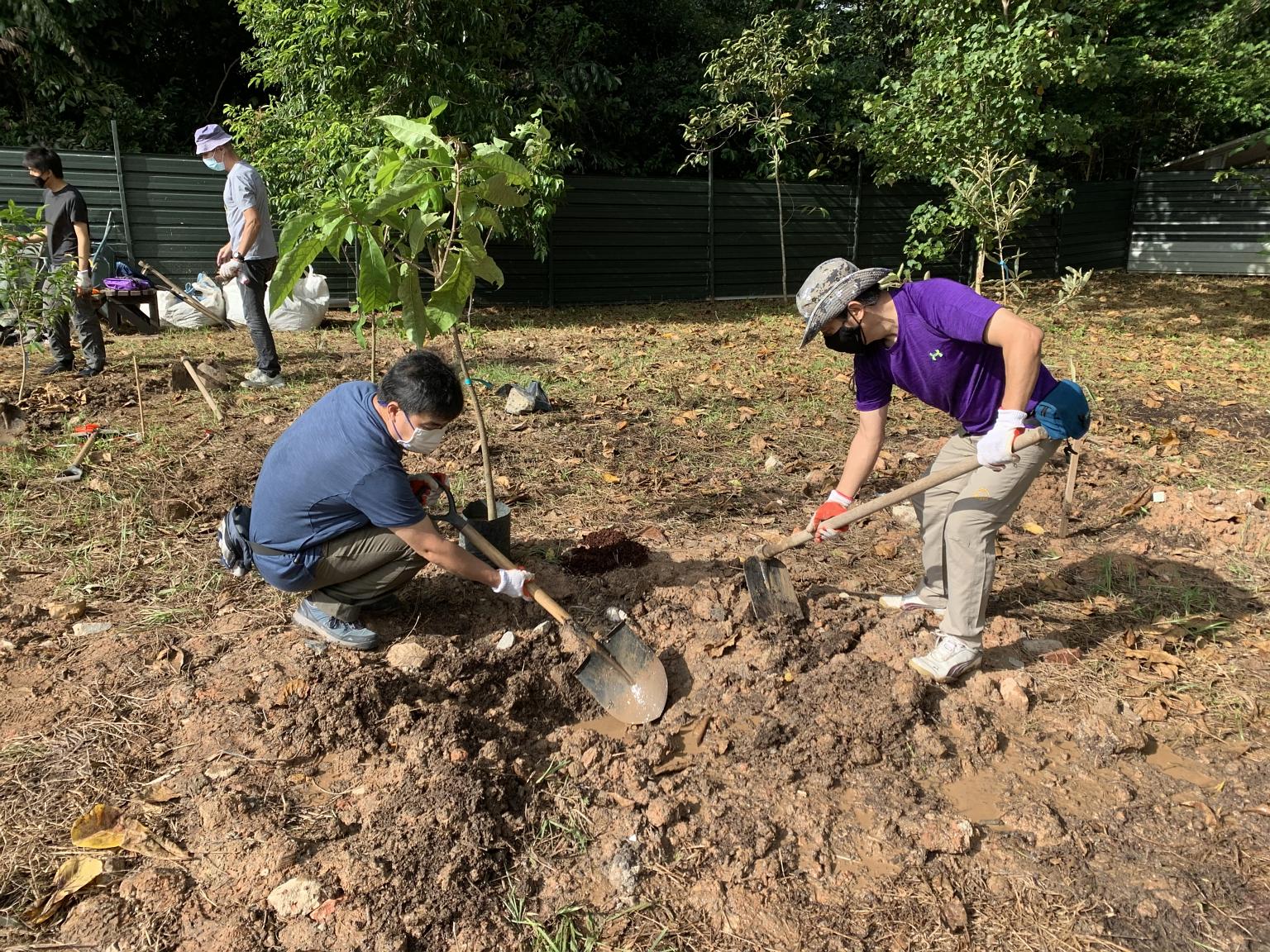Biodiversity Friends Forum and NUS Toddycats
Growing a forest and nurturing community spirit
Sign up now: Get ST's newsletters delivered to your inbox

Volunteers from nature groups preparing the soil for tree planting at Kranji Coastal Nature Park. They aim to transform the area into a coastal forest over the next five years.
PHOTO: NUS TODDYCATS
Follow topic:
It takes weeks to ensure a sapling takes root.
Mr N. Sivasothi, a senior lecturer at the National University of Singapore's (NUS) Department of Biological Sciences, is well aware of the arduous, time-consuming work needed, having organised mangrove clean-ups for two decades at Kranji Coastal Nature Park.
Now, in partnership with the National Parks Board (NParks) and in support of the One Million Trees initiative to enhance Singapore's green canopy, he is rallying the community to help transform the area into a coastal forest over the next five years.
"Before we can begin planting trees, we need to take a step back to prepare the soil by loosening and fertilising it, which is where the hard work comes in," said Mr Sivasothi, who also coordinates environmental volunteer groups such as the Biodiversity Friends Forum and the NUS Toddycats.
Once fast-growing vegetation covering the site is cleared away, volunteers begin digging the hole to plant a tree. Different types of soil enhancements are added into the hole and the area is then set aside for one to two weeks to allow it to settle. This will be followed by the planting of saplings.
"Getting the community to contribute to soil preparation helps to build intimacy with the plot of land, and they are encouraged to continue visiting the site to observe and maintain their saplings until they grow into trees," said Mr Sivasothi.
It is also important to maintain and monitor the saplings' growth on a bi-monthly basis as grass and other plants may grow over them.
"This allows us to quickly intervene and alert NParks if certain plants or species are not thriving well. In turn, we also learn which species thrive or suffer in certain conditions," he said.
Factors such as the elevation of the soil, the area's land-use history and the presence of "competing" plants could affect a sapling's survival.
Dr Adrian Loo, group director of NParks, said that plant species at the Sungei Buloh Nature Park Network, which covers Kranji Coastal Nature Park, were selected for the project to "restore the coastal beach and back mangal habitats" which are a step further from the shore than the mangrove habitat.
Some plant species have also been reintroduced into the area to help rejuvenate the soil and to attract dispersers such as birds which can help to stimulate the growth of other plants from adjacent forests.
To ensure continuity in the upkeep of the planted saplings, Mr Sivasothi has identified a few volunteer "leaders" who will be trained to guide their colleagues and expand community outreach.
He hopes that more such community-led initiatives will help Singapore increase its tree population from seven million to eight million over the next 10 years.
-
Making a difference
-
Environment
The Straits Times CAUSES WEEK Dec 20-25, 2020
MORE INFORMATION
Project Reconnections
Biodiversity Friends Forum
Herpetological Society of Singapore
tinyurl.com/frog-calls-sg

